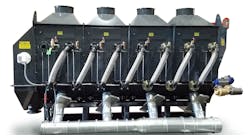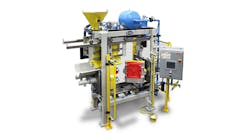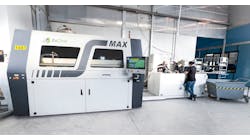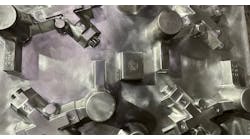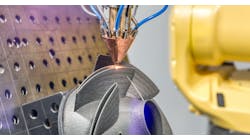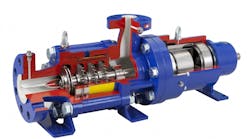Latest from Molds/Cores
Oil-and-gas drilling is a booming industry, and that boom is increasing the pressure by the operators and their suppliers to develop new equipment that addresses specific problems in exploration and processing of the products. A new concept for a pump designed to transport small quantities of oil and gas at high pressures was the starting point for a cooperative effort by Sero PumpSystems GmbH and Schmolz + Bickenbach Guss – a specialty steel foundry group.
Sero PumpSystems GmbH designed the SHP high-pressure side channel pump to transport liquid-gas mixtures, with small outputs and large discharge heads, at a nominal pressure of 100 bar.
In the past, rotary pumps have been used for this task: they are operated either well above the synchronous speed (up to 25,000 rpm), or they have running wheels with a large diameter and very small channels. Both of these are less-than-optimal solutions to the problem, being cost-intensive and prone to failures.
The SHP side channel pump is an alternative that may prove more popular for this specific quantity-pressure range. “With the new SHP barrel pump, increased operational reliability is guaranteed, as it has been constructed and designed in accordance with the relevant refinery directive API 610. Our demands for the stability of the stage casing were accordingly high,” according to Frank Hassert, technical director at Sero.
A further challenge to the development was meeting the delivery time for the cast pump casing. Sero had less than ten weeks to complete production, including time for extensive final functional tests on the prototype.
Because of the tight schedule, S+B Guss decided to use 3D printing to produce the prototype. After just eight weeks of planning and prototyping, the final product was precision cast in stainless steel.
The result is a casting with excellent, smooth surfaces (Ra 1.6 – 3.2), which is critical because the stage casing is a flow-channeling component and a rough surface would contribute to hydraulic losses. Another advantage to the design process was the dimensional accuracy of the finished structure, within the range of a tenth of a millimeter. In addition, the design process achieved an excellent contour near the end of the casing.
S+B Guss used austenitic stainless steel 1.4409 for the casting because of its low carbon content, which imparts a high degree of corrosion resistance even on welds. Moreover, it complies with the API 610 refinery directive as well as the NACE directives for products used in sour gas applications.
Sero subjected the initial prototype of the stage casing to an intensive series of tests. The hydraulic functionality (i.e. conveying performance in different load ranges) and NPSH performance were tested, as were the assembly and dismantling concept. Based on the results of that effort, the stage casing was modified again. Finally, series production of a precision casting tool for the stage casing was ready to begin.




